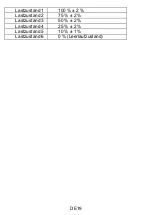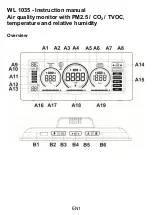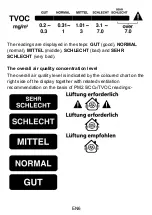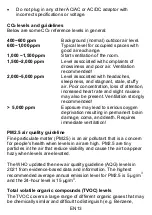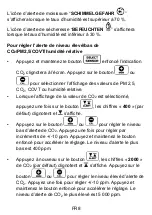
EN13
Do not plug in any other AC/AC or AC/DC adaptor with
incorrect specifications or voltage.
CO
2
levels and guidelines
Below are some CO
2
reference levels in general:
400~600 ppm
Background (normal) outdoor air level.
600~1,000 ppm
Typical level for occupied spaces with
good air exchange.
1,000 ~1,500 ppm
Start ventilation of the room.
1,500~2,000 ppm
Level associated with complaints of
drowsiness and poor air. Ventilation
recommended!
2,000~5,000 ppm
Level associated with headaches,
sleepiness, and stagnant, stale, stuffy
air. Poor concentration, loss of attention,
increased heart rate and slight nausea
may also be present. Ventilation strongly
recommended!
> 5,000 ppm
Exposure may lead to serious oxygen
deprivation resulting in permanent brain
damage, coma, and death. Requires
immediate ventilation!
PM2.5 air quality guideline
Fine particulate matter (PM2.5) is an air pollutant that is a concern
for people's health when levels in air are high. PM2.5 are tiny
particles in the air that reduce visibility and cause the air to appear
hazy when levels are elevated.
The WHO updated the new air quality guideline (AQG) levels in
2021 from evidence-based data and information. The highest
recommended average annual emission level for PM2.5 is 5 μg/m
3
and the 24-
hour level is 15 μg/m
3
.
Total volatile organic compounds (TVOC) levels
The TVOC covers a large range of different organic gases that may
be chemically similar and difficult to distinguish (e.g. Benzene,


